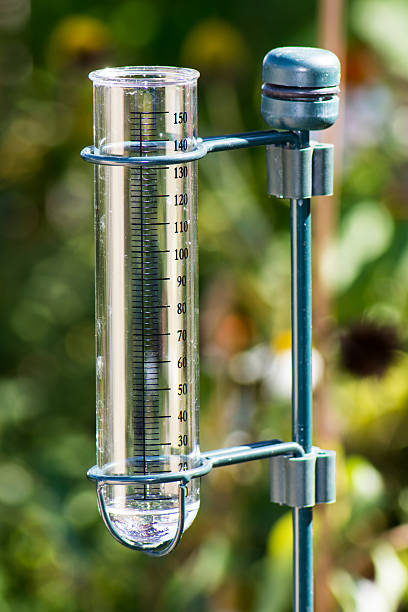The Rain Gauge: A Comprehensive Overview to Accurate Weather Condition Measurement
The Rain Gauge: A Comprehensive Overview to Accurate Weather Condition Measurement
Blog Article
Do It Yourself Rainfall Scale: Simple Steps to Make Your Own
Are you thinking about tracking rainfall in your area? Developing your own do it yourself rain scale is a basic and efficient method to tape-record and gauge precipitation. With simply a few usual materials and some fundamental steps, you can quickly construct your very own rainfall gauge in the house. In this guide, we will certainly offer you with a detailed procedure to assist you develop your own rainfall gauge. No requirement for any kind of specialized understanding or tools - this job can be finished by anybody. By following these straightforward instructions, you will certainly have a trustworthy device to measure rains and add to your understanding of the local weather condition patterns. So, allow's get started on making your do it yourself rainfall scale today!
Gather Products
To begin building your DIY rainfall gauge, gather all the needed products using a comprehensive checklist of items. Having the right products on hand will certainly make sure the successful production of your rainfall gauge and permit for accurate dimensions of rainfall. Gathering these products beforehand will certainly streamline the building and construction process and ensure that you have everything you need to develop your very own DIY rain gauge.
Prepare the Container

Mark the Measurement Increments
To accurately gauge the quantity of rainfall, accurately noting the measurement increments on your do it yourself rainfall scale is crucial. Without specific and clear markings, it would be challenging to determine the specific quantity of rainfall accumulated in your rainfall scale. Below are the actions to mark the dimension increments on your rain gauge.
First, select the device of measurement that you intend to utilize. The most usual units for measuring rains are millimeters and inches. When you have actually selected the unit, make use of a permanent pen or water resistant paint to note the increments on the side of your rain scale. For inches, you can mark every quarter inch or every fifty percent inch, depending on your preference. For millimeters, you can note every 10 millimeters or every 20 millimeters.
When noting the increments, it is essential to make sure that they are evenly spaced and clearly noticeable. Use a ruler or gauging tape to ensure accuracy and uniformity. Additionally, make certain that the markings are immune to fading or abrading, as exposure to the components might cause them to degrade over time.
Place the Rain Scale Outdoors
The rainfall scale should be put outdoors to precisely accumulate rains data. The place selected for the rainfall scale should be totally free and open from find more info any kind of blockages that could potentially impact the dimension of rains. It is necessary to find an area that is not blocked by trees, structures, or other structures that can obstruct the rainfall from getting to the scale. This will certainly make certain that the collected data is agent of the actual rainfall in the area.
Furthermore, it is vital to place the rain gauge on a stable surface, such as a level ground or a durable post. This will avoid any activity or tilting of the scale, which can result in unreliable measurements. It is also a good idea to stay clear of positioning the scale near any kind of resources of synthetic water, such as sprinklers or water drainage systems, as this might hinder the accuracy of the measurements.
Monitor and Document Rainfall Data
Normal tracking and recording of rainfall information is necessary for precise data evaluation and interpretation. By maintaining track of rainfall dimensions, you can obtain useful insights right into weather condition patterns, climate fads, and water resource monitoring. To successfully keep track of and record rainfall information, it is necessary to develop a regular and preserve constant techniques.
To start with, ensure that your rain gauge is positioned in an open area far from obstacles such as trees or structures that may block rainfall. Additionally, make certain resource the rainfall gauge is degree and securely secured to avoid any kind of motion that can affect the precision of the measurements.

When tape-recording the rainfall information, it is very important to note the date and time of each measurement. Utilize a leader or a gauging stick to determine the rainfall depth in the rainfall scale, and document this details properly.
To make certain the precision of the dimensions, it is advised to clear the rainfall gauge after each recording. This will prevent any overflow or evaporation from affecting succeeding dimensions.
Conclusion
Finally, developing a DIY rainfall gauge is a practical and simple means to check and tape rainfall information (The Rain Gauge). By complying with the steps laid out in this post, you can easily collect materials, prepare the container, note the dimension increments, and place the rainfall gauge outdoors. Frequently keeping an eye on and tape-recording rains information can offer beneficial information for various purposes
Having the best materials on hand will ensure the successful production of your rainfall gauge you could look here and enable for accurate measurements of rains.To accurately determine the amount of rainfall, precisely noting the dimension increments on your DIY rainfall scale is important.The rainfall gauge ought to be put outdoors to precisely collect rains information. The location selected for the rain scale need to be open and free from any type of obstructions that can potentially influence the dimension of rainfall.In verdict, creating a DIY rainfall scale is a easy and useful means to check and videotape rainfall data.
Report this page